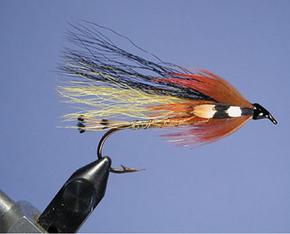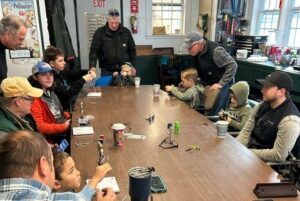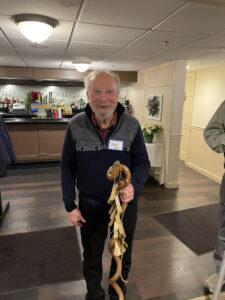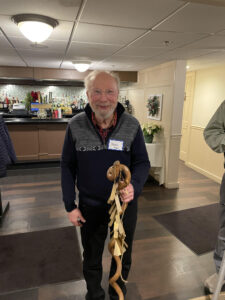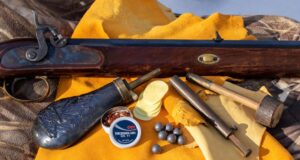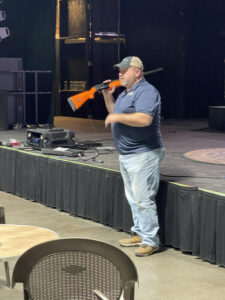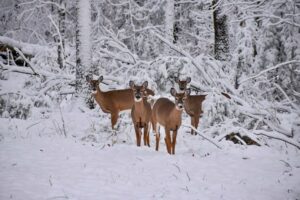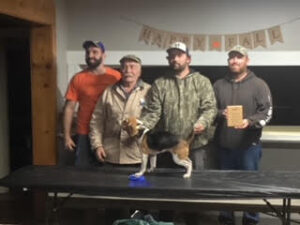In the 2024 Massachusetts Hunting and Fishing regulations, you might have noticed a new paragraph entitled Coldwater Streams (page 17) and wondered what that is all about. It explains what a Coldwater Fish Resource is.
A Coldwater Fish Resource (CFR) is a waterbody (stream, river, or tributary) that contains at least one Coldwater fish species (i.e., Longnose Sucker, Slimy Sculpin, Lake Chub, American Brook Lamprey, Burbot, Rainbow Trout, Rainbow Smelt, Landlocked Salmon, Brown Trout, Brook Trout, or Lake Trout) where reproducing cold water fish are found. These fish are sensitive to increases in temperature and require cold water to fulfill one or more of their life stage requirements.
CFRs are particularly sensitive habitats and changes in land and water use can reduce the ability of these waters to support trout and other kinds of cold water fish. Protection of cold water habitats is critical for maintaining the overall health of cold water fish species which are ecologically, and in many cases, recreationally important fishes throughout Massachusetts.
Once designated as a CFR, a waterbody is then afforded a greater degree of protection from potential human-caused alterations to their health. Conservation/planning commissions, land trusts, consultants, and town open space committees will find this information useful for conservation planning.
A map and list of currently designated CFR’s can be found at Mass.gov/dfw/cfr. To get started, find your town using the search box in the map. CFRs are shown in blue, click on a stream for more information. The Division of Fisheries and Wildlife (DFW) maintains a list of waters that are identified as Coldwater Fish Resources (CFR).
New streams are sampled and evaluated yearly. There are more than 11,000 miles of streams and rivers in the Commonwealth, not all of which have been sampled. The CFRs are updated and posted annually to reflect the most current fisheries surveys, but CFR listings may be identified frequently in the interim.
For information on the most updated listings or questions involving CFR water quality or development projects (i.e., environmental review, etc.) that may affect CFRs, contact Adam Kautza (adam.kautza@mass.gov). Requests should include GPS coordinates or location description, stream name and/or SARIS ID number, town, and a brief explanation for your inquiry.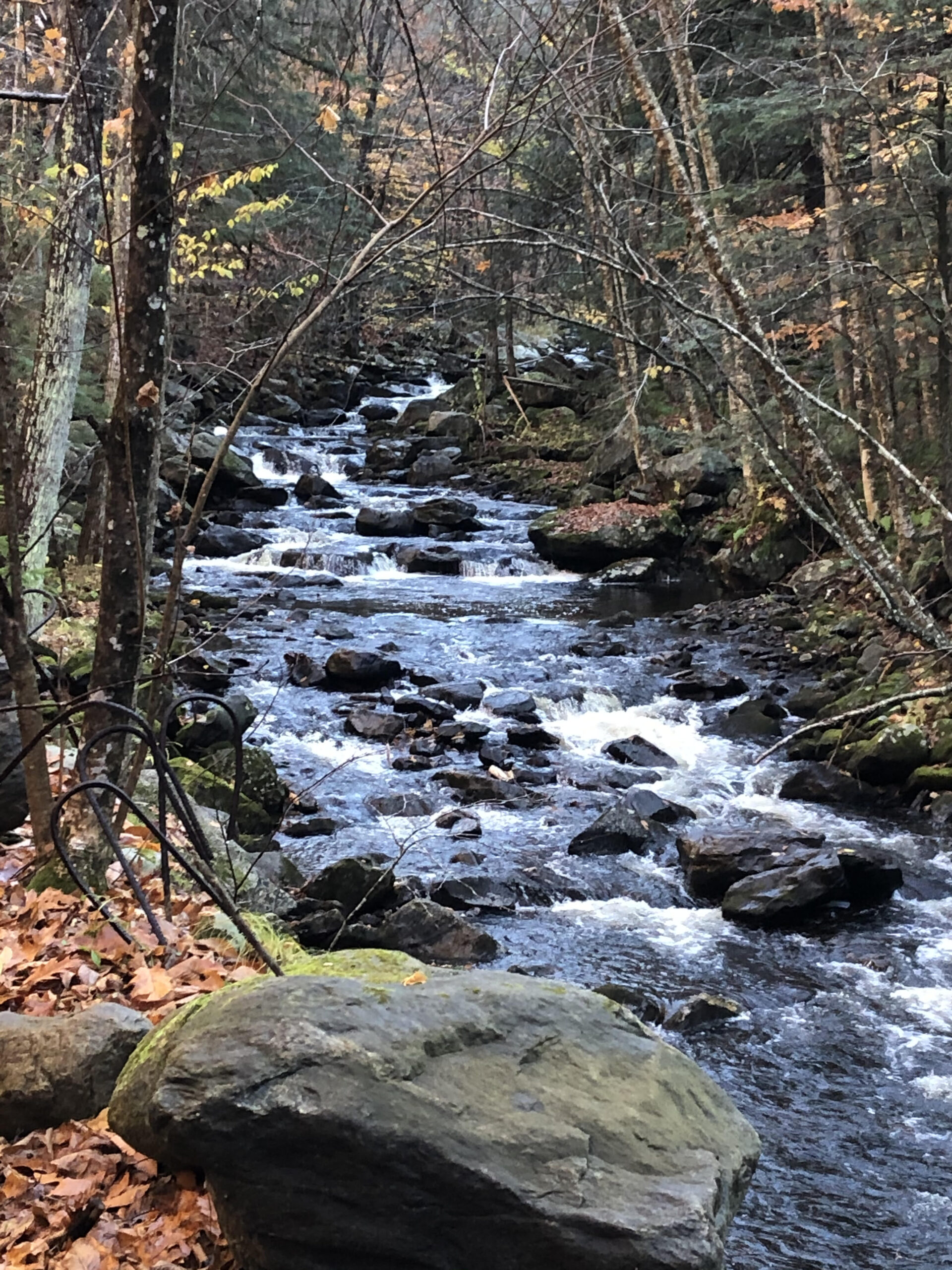
A person may request the DFW to reconsider its designation of a waterbody as a CFR or to designate a waterbody as a CFR. Any such request must be made in writing and provide the basis for the request and include supporting biological data and information.
Incidentally, last August DFW’s Adam Kautza came out to the Berkshires and gave a talk on this subject at the Stationery Factory in Dalton. At that time, there were 1,277 identified wild trout streams in MA spread out. DFW finds new ones every year. (While corresponding with him last week, he wrote that they were up to almost 1,300 now). They try to get back to resurvey streams about every 15 years but some get surveyed more frequently.
He said the vast majority of CFR’s are wild brook trout streams, but there are a fair number of brown trout and a few rainbow streams. No trout were discovered in 132 of those 1,277 CFRs but that doesn’t mean that those fish are extirpated. It just means that the most recent surveys didn’t turn up any wild trout – they could be elsewhere in the stream. Some streams have no current data.
Native Brook Trout are the most abundant trout and they live 2 to 3 years average, rarely 4 years old. A 10-inch Brook Trout is a trophy in pretty much any wild trout stream in Massachusetts other than the Swift River or the sea-run stream. Brook trout are relegated to much colder smaller waters. But some rivers such as the Swift River have a condition of year-round cold water, (caused by bottom cold water discharges from Quabbin Reservoir) and some of those wild brook trout reach 15 to 20 inches.
Brook trout are native to Massachusetts.
Brown trout, which were first introduced in Massachusetts in the late 1800’s have been introduced all over the state in various water bodies but have only become established as wild populations in a few areas, especially in the Connecticut, Housatonic, and Hoosic River basins but also there are scattered populations elsewhere. Wild Brown Trout live in warmer streams but that is only relative to the temperatures where they generally find Brook Trout. It’s still cold for sure. In the larger streams they can reach 24 to 25 inches and can live to 7,8, or 9 years old.
Rainbow trout were another introduced species and were concentrated in small areas. They are migratory, There purportedly is a good population of them in Clesson Brook in Franklin County.
I’ll bet that there are a few white-haired folks who are reading this column and are thinking back to the old days when wild “speckled” brook trout were in almost every local stream. I know that in Lenox, it was hard to find a stream that didn’t have them. Some of those streams still do.
Rocky Mountain Elk Foundation Banquet
The Bay State Chapter Banquet of the Rocky Mountain Elk Foundation will be holding a banquet on Saturday, January 27, 2024 at 5:00 pm at the Stockbridge Sportsmen’s Club, 24 West Stockbridge Road, Stockbridge. There are a dozen entrance fee scenarios, but a single ticket costs $90, or tickets for a couple cost $145.00. Dinner is served at approximately 6:30 pm.
Prizes include forearms, bows, premium trips and adventures, hand crafted furniture, limited edition art, gifts, gear, and more.
Seats and tickets are limited and you can reserve your tickets by registering online.
Bottom of Form
For more details, contact: Gary D. Johnston at hillroad1101262@gmail.com, or (413)298-3623.
Fishing and Hunting Swap Meet
The Cheshire Rod & Gun Club (CR&G) will be holding its third annual Fishing and Hunting Swap Meet on Saturday, February 3 at its clubhouse at 310 Curran Road, Cheshire. The hours are from 8:00 am to 1:00 pm. Open to the public, the admission cost is $3.00 for adults and kids 12 and under free.
It is an opportunity to buy, sell or trade new and used fishing and hunting gear. No guns, ammunition, household items; unsold items must be removed.
Breakfast and lunch are available. Table space is still available at $30, which includes admission for one. To reserve a table, contact Jeff Kruszyna at (413)743-4168.
Truckload of Goodies raffle winners
The Cheshire Rod & Gun Club has announced the winners of its Truckload of Goodies Raffle. Gary Vosburg was 1st place winner, 2nd was Phil Hiser, 3rd was Gary Rochello, and 4th was Josh Rocca. Congratulations to all!
Winter Fly Tying
Justin Adkins, President of the Taconic Chapter of Trout Unlimited recommends that you save dates for some great fly tying gatherings this winter. No matter if you are a new or seasoned fly tyer, there is something for everyone. Vises and materials are provided but if you wish, you can bring your own.
Taconic TU fly tying gatherings are scheduled for the Wild Soul River, 248 Cole Ave., Williamstown on January 21, February 11 and March 16 at 3:30pm.
Berkshire Outfitters, located at 169 Grove Street Adams, will have a fly tying event on February 24 at 6:30pm. Anyone interested in attending the event should contact Chris Sampson at Berkshire Outfitters to reserve a spot.
In southern Berkshires, Taconic TU member Peter Paulson is joining Dean Hutson and the folks at the Berkshire National Fish Hatchery, 240 Hatchery Road, New Marlborough, MA for some fly tying events scheduled for today, January 20. The next two scheduled tying events will be February 17 and March 16 (3rd Saturdays of the month).

